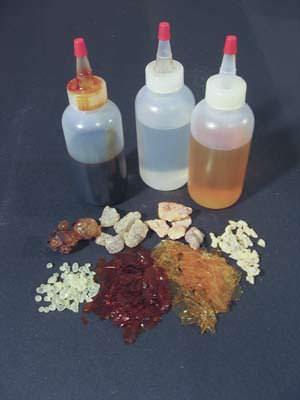French polish
 French Polish is a shellac based finish applied by hand with a special pad. When it was first used (probably in the1700s) various natural resins were added to the shellac to alter its aesthetic and structural properties. The recipe I use contains some of these natural resins to make it tougher and more resistant to wear than a finish consisting purely of shellac.
French Polish is a shellac based finish applied by hand with a special pad. When it was first used (probably in the1700s) various natural resins were added to the shellac to alter its aesthetic and structural properties. The recipe I use contains some of these natural resins to make it tougher and more resistant to wear than a finish consisting purely of shellac.I use French polish on my instruments for several reasons:
First, it is the most beautiful finish, and is the only finish which organically compliments the completed instrument. The warm amber tones of shellac bring out the true beauty of wood like no other finish material can.
Secondly, it is the right finish for musical reasons. French polishing is thin enough not to inhibit the way a fine instrument is made to vibrate.
In theory, many other finishing materials can be applied thinly, as manufacturers always claim. In practice, they are invariably too thick. As an instrument repairman I witnessed this on a daily basis. I was asked by several flamenco and classical guitar owners if I would strip the polyester varnish off the soundboards of their factory made guitars and replace the finish with a French Polish. In every instance, the sound of the guitars was greatly improved.
Some of the first instruments I made were sprayed with nitro-cellulose lacquer. Nitro-lacquer must be sprayed on quite thick, so as to ensure that the finish is not rubbed through when it is level sanded and buffed to a high gloss. This extra thickness helps protect the instrument, but it also restricts the sound. Nitrocellulose laquer and polyester varnish were designed for factory mass-production of steel-string guitars and production quality classicals, but not for making fine classical guitars.
Thirdly, French polish is repairable. Touching up scratches, dings, and wear spots is relatively fast and easy. This does not constitute re-finishing. It is expected that a French polish finish will need re-touching at some point to renew its luster and life. Other finishes get damaged and worn too, but most of the time they are difficult, costly, or impossible to repair without major intervention.
Lastly, shellac has stood the test of time. It is centuries old, and has proven itself as the superior finish for fine classical guitars.
How do you look after a French polished instrument?
Keep the instrument clean. Wipe any sweat or grime off the guitar with a soft flannel cloth after playing. Avoid excessive moisture on the guitar and do not use any caustic cleaning agents when removing grime. I've found Dunlop guitar polish to work very well for this.
Use non-adhesive soft vinyl patches like "kling-on" brand to protect the soundboard or other parts of the guitar from nail dings during string changes or playing. I include some with each guitar I sell.
Unlike most other finishes, french polish is relatively easy to touch up and repair.
